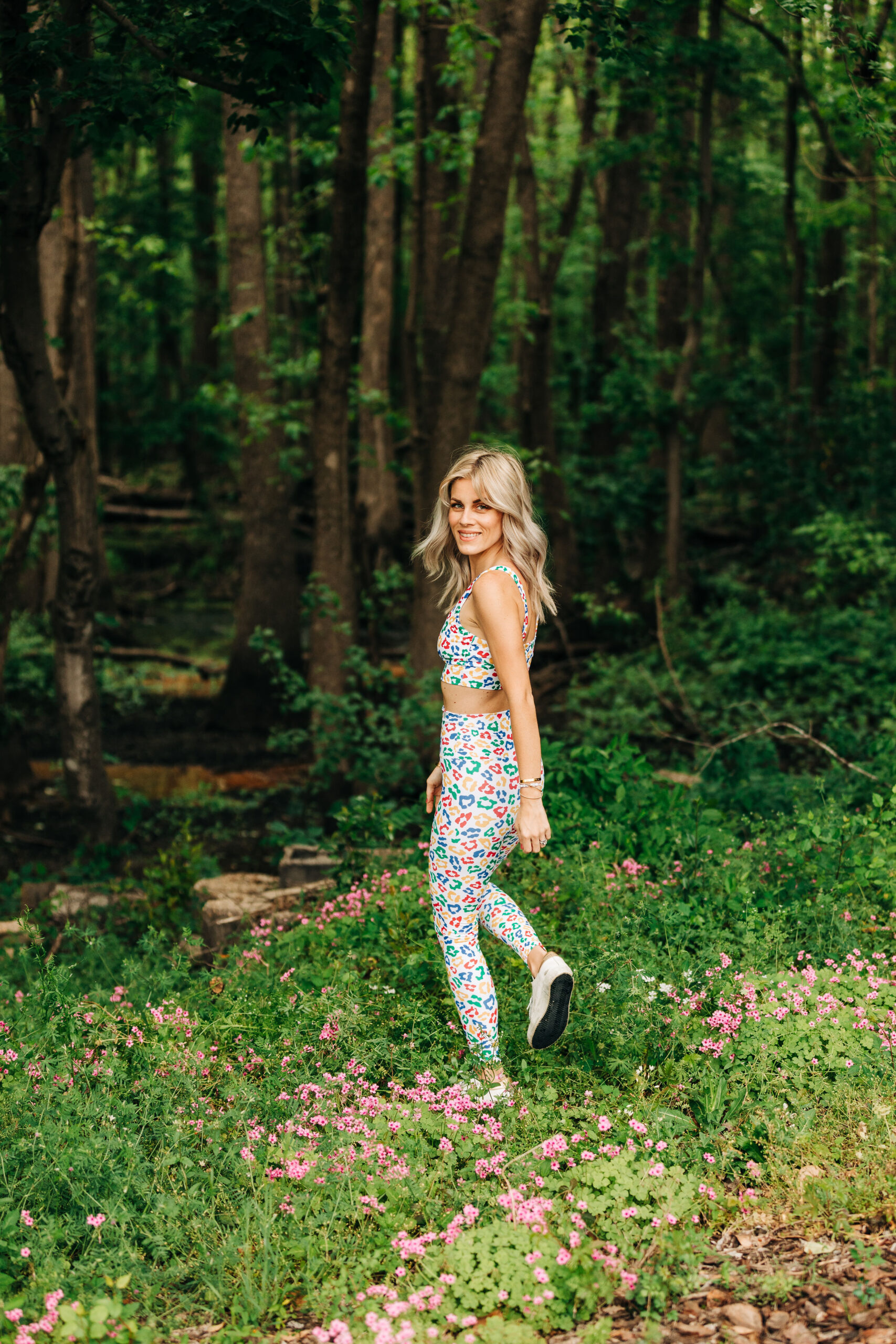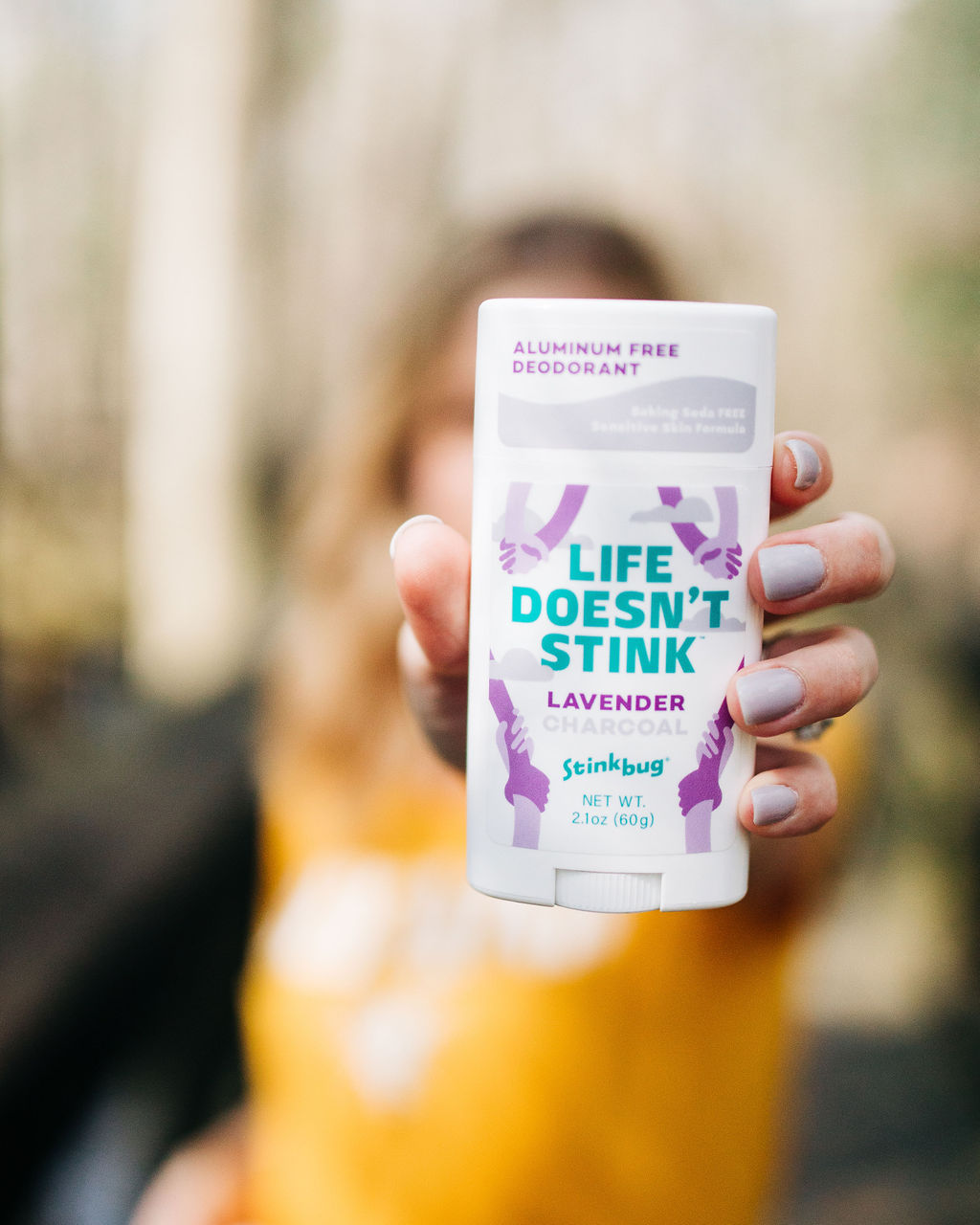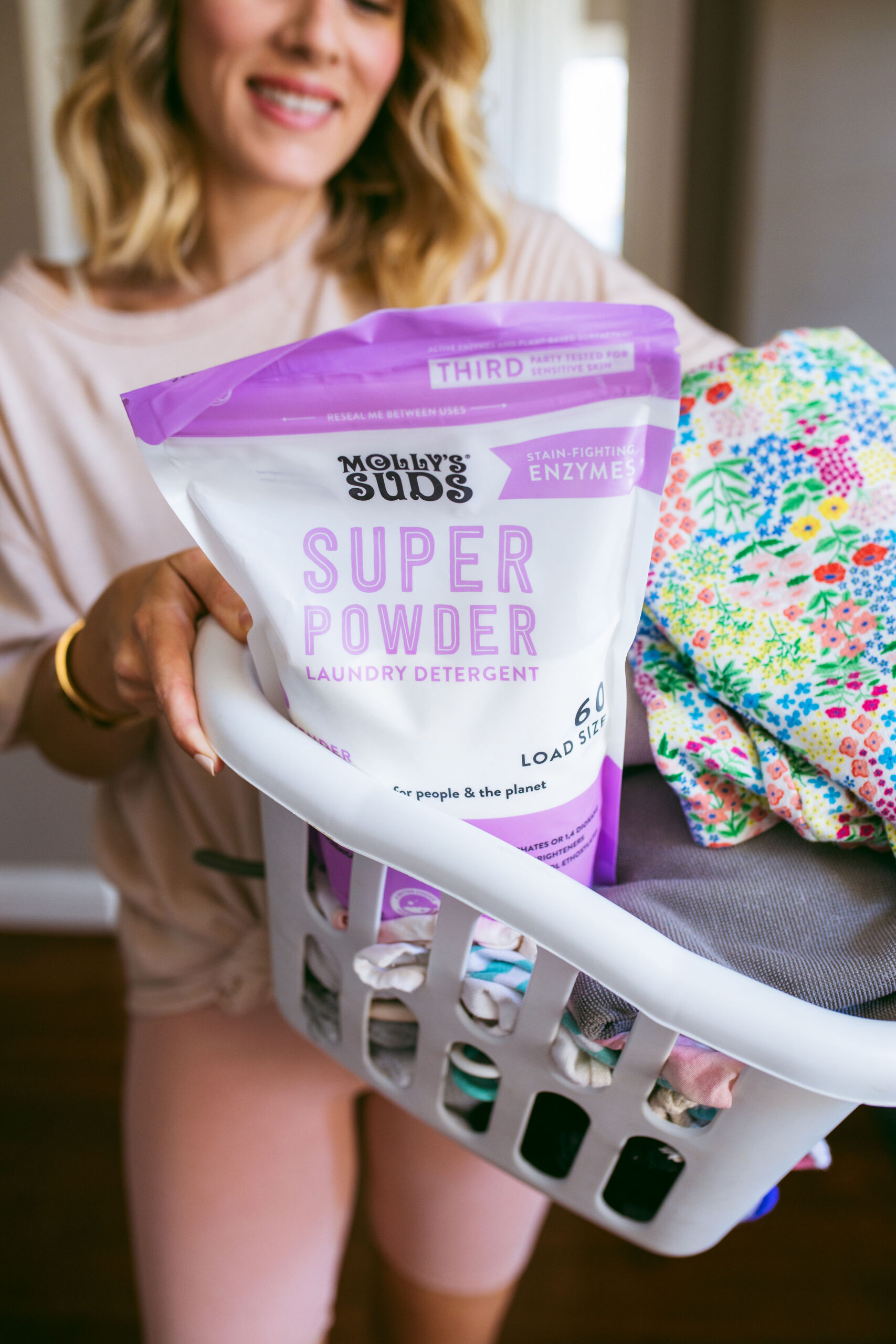
Nontoxic Laundry Detergent 411
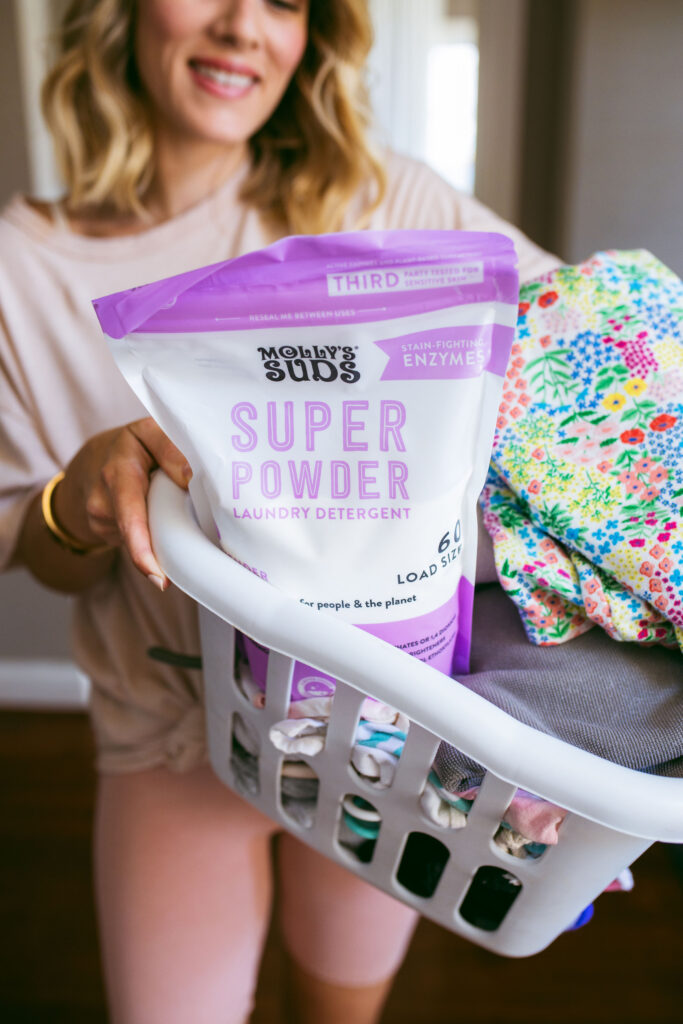
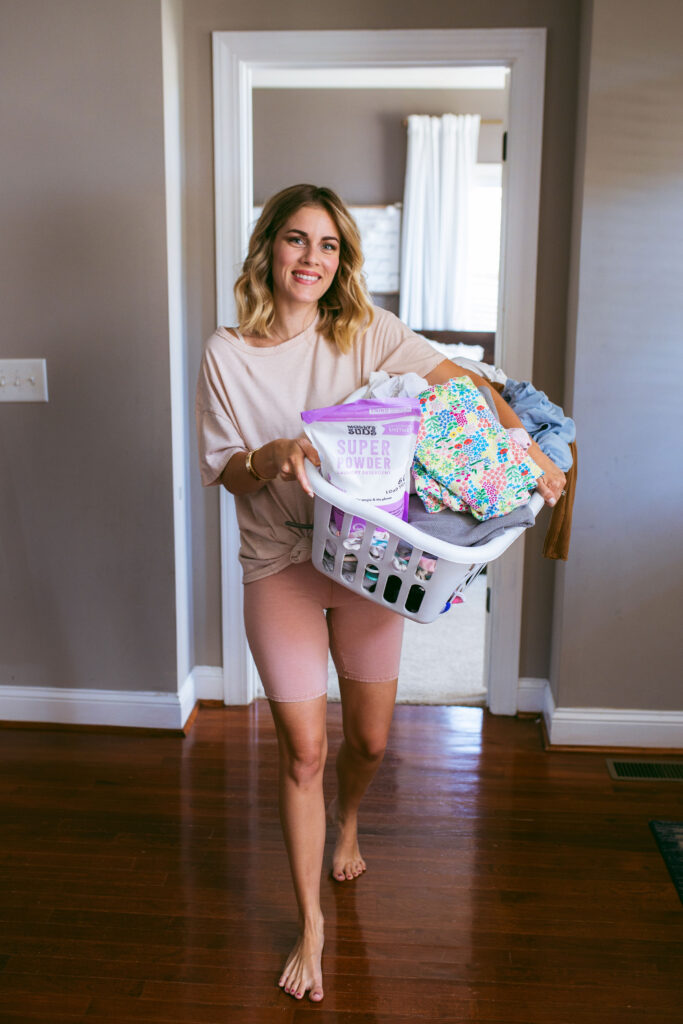
It’s funny that I’m writing about the topic of laundry because I’m currently knee deep in laundry. I let my daily routine get out of wack so it’s my fault. As a mom of five, between the kids, Derrek and myself I have found that if I wash and dry two loads of laundry a day then it can all be put away before bedtime and not overflowing from the laundry baskets. When I don’t stick to a daily laundry routine things pile up like they are right now because we spent the weekend at the pool. Now that Nolan and Harper are older, I’ve actually made it a point to get them involved with our laundry and they fold towels, put away their pants and underwear, match socks and hang up their shirts. THIS has been so, so, so helpful! (If you have any more tips for laundry, I would love to hear them.)
Now that we’re talking laundry, I bet you never knew exactly how many issues could be caused by laundry products you use. I also bet you never knew that chemicals are released into the air and causes indoor air pollution every time you use your washer and dryer. When it comes to laundry products, I started switching to safer when my first child, Nolan was born. I was a first time mom and had been gifted several “baby detergent” bottles from friends and family. Little did I know that the line that’s promoted specifically for sensitive skin and newborn babies was filled with super toxic stuff. He ended up getting baby eczema which most pediatrians will share is “common” now but it’s actually a common side effect to certain ingredients in our laundry detergents and fabric softeners. You can read all about what is in mainstream laundry detergents and fabric softeners by clicking here.
Something that I did not know until I started looking deeper is that laundry product manufacturers are not required to list all of the ingredients on the packaging, making it very confusing and misleading when looking for a safe product.
Here are a few of the top toxic culprits when it comes to laundry detergent ingredients:
Fragrance – this is a trade secret protected by the FDA. We as American citizens have no right to know exactly what this term is when it’s included in a product. The problem is that “fragrance” can refer to thousands of different ingredients and most of the time lead to skin irritation. Eczema, psoriasis, allergies, headaches, asthma, and rosacea are all common problems that have been linked to fragrance.
Stablizers – these chemicals help elongate the shelf life of laundry detergents. When looking at ingredients in your laundry detergent, stabilizers are labeled as: polyalkylene oxide or ethylene oxide, which are linked with eye and lung irritation, and even dermatitis.
Surfactants – these are the cleaning agents that are used in well known laundry detergents, hand and dish soaps, and toothpastes. Surfactants are used in these products to help them clean better. If you want to check your ingredients, you can see surfactants labeled as quaternium-15 (known to release formaldehyde, a known carcinogen), diethanolamine (linked with skin and eye irritation and possibly liver problems), nonlphenol ethoxylate or NPE (toxic to nerves, irritating to skin, potential hormone disruptor, toxic to aquatic life), linear alkyl benzene sulfonates or LAS (irritating to skin and eyes and toxic to aquatic life; benzene on its own is a carcinogen), and petroleum distillates (linked to cancer and lung damage).
Brighteners – you’ll find these in “brightening” detergents. Brighteners are actually chemicals that remain on clothes after washing to absorb UV light and help clothes “appear” brighter. The chemical names for brighteners include naphthotriazolystilbenes (linked with developmental and reproductive effects), benzoxazolyl, diaminostilbene disulfonate, and more. Since these remain on the clothes, they are likely to come into contact with skin, causing these issues.
Besides the fact that most companies do not disclose all the ingredients in their products, I’ve also picked up on companies that use “greenwashing” when sharing about their products. “Greenwashing” is when a company claims to be non toxic and better for you when it’s actually not. They use terms on their labels to attract us and often are successful. Things like “for babies,” “sensitive skin,” and “no parabens or sls” are often shared for people that are wanting to do better to spot and grab quickly. What these companies do not want us to do are to look into the ingredients in their products because we would see that they are still using harmful ingredients when the front of the bottle says otherwise. When it comes to “greenwashing,” I’ve learned a lot and have chosen to share in depth about it here.
I have tried several non toxic laundry detergents and just was not impressed. I couldn’t get stains out, smells out, dingy looking and just not high performing when it came to the results. A few friends of mine shared about a brand called Molly’s Suds. The price difference of what I had always used and Molly’s Suds held me from ordering initially but when I finally ordered, I realized why it was more expensive. High performing ingredients means less amount of product that you use. This laundry detergent requires on scoop in each load and the bag lasts me a month or so! Ya’ll… I wash A LOT of laundry so this just butters my biscuit! Another huge perk is that it’s husband approved. Derrek is normally the hardest to impress when I bring in a new product, ESPECIALLY when it has to do with his laundry SO if he likes it, I am sticking with it. If I ever need help lifting tough stains or wanting to make my white brighter, I add in white vinegar and let them soak a little bit.
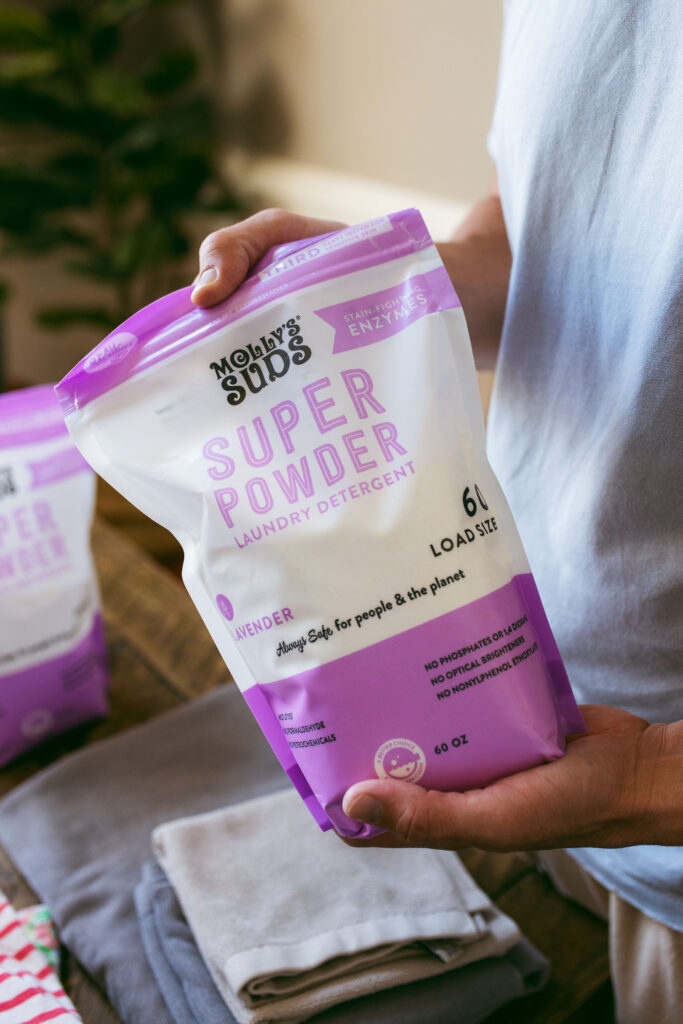
After I wash my clothes, they mostly hang outside to dry during the warmer months but when the weather turns colder, we use the dryer constantly. To help cut back dryer time and our exposure to VOCs produced by dryer sheets, we invested in wool dryer balls. Wool dryer balls are great because they reduce drying time, static and toxic chemicals that are omitted into the air through the dryer vent. The ones I purchased have two day free shipping and come in a pack of 6. You can also put a few drops of your favorite essential oil blends on them to create your own smell on your clothes. I love using ON GUARD or CITRUS BLISS essential oil blends on our wool dryer balls. When washing and drying our bedding, I add a few drops of Lavender and Cedarwood oil to my dryer balls. It is so relieving to have finally found what works best for my family.
I hope this nontoxic laundry product guide will be a great help to you when you are looking into switching to safer in this area. I’ve tried a lot of products and these are hands down the most high performing and long lasting that I’ve found. Please share your favorites below or if you try these, share your thoughts!

